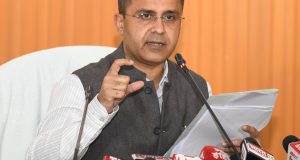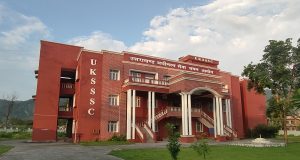DAINIK NATION BUREAU
The Union government is developing a Common Alert Protocol (CAP) system to warn people about impending thunderstorm and lightning strikes, which account for the second highest number of natural disaster deaths in India, a top official has said.
K J Ramesh, the director general of meteorology, India Meteorological Department (IMD), said predicting thunderstorm and lightning might be a possibility soon by studying satellite and radar images and collating data from several other sources.
“The CAP model has already been tested successfully. A message can be pushed into all active cell phones in a particular area, alerting people about the possibility of lightning,” he said at a three-day international conference, which began here on Thursday evening.
The top IMD official also complimented the Odisha government for talking “proactive steps” in building proper infrastructure to ensure safety of its people during natural hazards.
“The Odisha government has been trying to improve matters and working closely with the IMD. The state administration has built a large number of cyclone shelters along the coastal areas,” he said, adding that the media would need to play a crucial role in creating awareness on natural calamities.
Inaugurating the meet, Odisha’s Higher Education and Industries Minister Ananta Das urged researchers to find solutions to nature’s fury as lightning led to 1560 deaths in the state in the last four years.
Stating that he had once witnessed the death of three youths who were struck by lightning, he said nature’s behavior has become erratic and Odisha was prone to many extreme weather events including thunderstorm, heavy rainfall, heat wave, cyclone and flood.
The state government has set up the Odisha State Disaster Management Authority (OSDMA) in the aftermath of the 1999 super cyclone to cope with such situations and efforts were on to strengthen the mitigation machinery and emergency response to natural calamities, he said.
The conference, attended by over 200 scientists, researchers, academicians, planners and other stakeholders from abroad, including the US and South Africa, has been jointly organised by OSDMA and the Centre for Environment and Climate (CEC), in collaboration with other institutes.
Ministry of Earth Sciences Secretary M N Rajeevan, Odisha’s Special Relief Commissioner Bishnupada Sethi and Purdue University Profesor Dev Niyogi were among those who spoke on the occasion.
Sethi said the three-day conference has been organised to attract national attention on natural hazards and find methods to manage such events.
Odisha, he said, suffered a loss of Rs 72,000 crore due to damage caused to infrastructure by natural calamities in the last 24 years.
“Lightning alone has caused over 5000 deaths in the state since the super cyclone of 1999. Most of these casualties occurred between April and September. The researchers should be able to find out why some Odisha districts like Deogarh were less susceptible to lightning when compared to Mayurbhanj,” he stated.
Rajeevan, on his part, said it was difficult to predict certain natural hazards because of their brief lifespan.
“The Indian Institute of Tropical Meteorology (IITM), Pune and Earth System Science Organization (ESSO) have developed an app, ‘Damini’, to monitor lightning activities.
There was need for more extensive study in the area and the Ministry of Earth Sciences is carrying out a research project on thunderstorms,” he added.PTI
 Dainik Nation News Portal
Dainik Nation News Portal




